Product pictures
| Amount Per 1 rangoon, 28 g | |||
| Calories | 120 Kcal (502 kJ) | ||
| Calories from fat | 54 Kcal | ||
| % Daily Value* | |||
| Total Fat | 6g | 9% | |
|---|---|---|---|
| Saturated Fat | 1g | 5% | |
| Cholesterol | 10mg | 3% | |
| Sodium | 310mg | 13% | |
| Total Carbs | 10g | 3% | |
| Protein | 2g | 4% | |
| Vitamin A | 0.1mg | 2% | |
* Percent Daily Values are based on a 2000 calorie diet. Your daily values may be higher or lower depending on your calorie needs.
Find out how many calories should you eat.
Ingredients And Nutrition Overview
Best
choice Good
choice Poor
choice Avoid
it!
choice Good
choice Poor
choice Avoid
it!
-
WeightWatchers Points: 2.9, PointsPlus: 3, SmartPoints: 4
WeightWatchers Points are estimated by carbohydrates, fats, protein and fiber in product. They are not an affirmation of better quality or nutritional value of the product or its manufacturer. Only way to count for dieters. Less points are better.
Read more at Weight watchers diet review -
Salty! Has over 13% of the daily sodium max
The average American consumes 5,000 mg of sodium daily — twice the recommended amount amount of 2400mg for healthy adults, this is 1 teaspoon of salt.
For medical reasons many people should not exceed 1500mg of sodium.
Surprisingly, you're responsible for only 15% of the sodium in your diet the bigger part - 75% of the sodium that you consume each day comes from processed foods, not home cooking or the salt shaker.
Excess sodium intake increases the risk of high blood pressure, hypernatremia, hypertension, cardiovascular disease and other heart problems.
Are these reasons enough to cut the sodium intake? No doubt! -
Convert Salt tsps to Sodium mg easily
Salt (NaCl) is not excactly sodium (Na).
It is not right to use these terms as synonyms.
The FDA recommended limit of sodium is 2,300 mg per day (or even less - about 1500 mg while one is on low sodium diets).
This is much less than the weight of salt.
(5,750 mg per day or 3,750 mg for low sodium diet) and not so convenient to calculate.
Know how much sodium is in your salt - without a calculator:
1/4 tsp salt = 600 mg sodium
1/2 tsp salt = 1200 mg sodium
3/4 tsp salt = 1800 mg sodium
1 tsp salt = 2300 mg sodium -
Learn about veggies and iron
Veggies such as broccoli, bok choy, spinach, parsley and most leafy greens are naturally high in iron.
However, compared to other high-iron foods, like red meat, fish and poultry, the iron in plant foods is not absorbed as easily by the body. What can you do to increase the absorption of iron from these plant foods?
- Vitamin C increases the absorption - so try having a fresh tomato, lemon juice, or an orange together with your high iron food
- Avoid drinking too much coffee - caffeine can decrease the absorption of iron
- In addition to caffeine, the tannins found in tea can also reduce iron absorption
- If you are a vegetarian, try having iron-fortified breakfast cereals, legumes, and eggs
-
Contains MSG-like ingredients
People feeling reaction to MSG may also react adversely to MSG-like substances.
Glutamates or chemically similar items are added to improve a product's taste.
Here is a short list of common MSG-like substances:
- Yeast extract
- Autolyzed yeast
- Hydrolyzed proteins
- Textured proteins
- Anything "enzyme modified"
-
Product contains sulfites
Sulfites (sulphites) are inorganic salts that are used as antioxidant of food preservative or enhancer.
They may appear on food labels in various forms, such as: sulfur dioxide, potassium bisulfite, potassium metabisulfite, sodium bisulfite, sodium metabisulfite or sodium sulfite
Although sulphites do not cause a true allergic reaction, people with sensitivity to sulfites may experience similar reactions as those with food allergies.
Those who have asthma are most at risk to sulphite sensitivity.
BTW sulfites are included in the ten priority food allergens in Canada. -
Has EDTA, on FDA's toxicity watchlist
Ethylenediaminetetraacetic acid (EDTA) is a chemical added to certain foods and beverages to keep their color and flavor.
EDTA is known as a persistent organic pollutant. It resists degradation from biological, chemical, and photolytic processes.
It may irritate the skin or cause skin rash and even asthma.
It is is generally recognized as safe by FDA, but is on it's list of food additives to be studied for toxicity.
Allergens
Lactose Allergy, Milk Allergy, Shellfish Allergy, Eggs Allergy, Soy Allergy, Gluten Allergy, Wheat Allergy, Sulfites Allergy, Peanuts Allergy, Corn Allergy, Fish Allergy
Crab rangoons Ingredients
Filling: Cream Cheese (Pasteurized Cultured Milk and Cream, Whey, Salt, and/or Tara Gum and/or Guar Gum, and/or Xanthan, and/or Carob Bean), Crabmeat (Crabmeat, Salt), Mayonnaise (Canola and/or Soy Bean Oil, Water, Eggs, High Fructose Corn Syrup, Salt, Vinegar, Mustard Bran, Calcium Disodium EDTA (to Protect Flavor)), Breadcrumbs [Enriched Wheat Flour (Contains Iron, Niacin, Thiamin, Riboflavin and Folic Acid), Water, Vegetable Shortening (Partially Hydrogenated Soybean, Cottonseed, and/or Canola Oils), Dextrose, Yeast, Salt, Calcium Propionate (to Retard Spoilage), Diacetyl Tartaric Acid Esters of Mono and Diglycerides, Dough Conditioners (Calcium Sulfate, Ascorbic Acid, L-Cysteine, Fungal Enzyme, Azodicarbonamide)], Eggs (Whole Eggs, Citric Acid (to Preserve Color) and Xanthan Gum), Lemon Juice [(Water, Concentrated Lemon Juice), Sodium Benzoate, Sodium Metabisulfite and Sodium Sulfite (Preservatives), Lemon Oil], Dijon Mustard (Distilled Vinegar, Water, No. 1 Grade Mustard Seed, Salt, White Wine, Sugar, Pectin, Citric Acid, Tartaric Acid and Spices), Mashed Potatoes [(Potatoes Dried, Mono and Diglycerides (to Improve Texture), Sodium Acid Pyrophosphate, Sodium Bisulfite, Citric Acid (to Preserve Freshness), Water], Minced Onions, Sea Salt, Red and Yellow Bell Peppers. Worcestershire Sauce [(Vinegar, Water, Molasses, Hydrolyzed Vegetable Protein, Salt, Sugar, Anchovies (Fish), Onion, Garlic, Citrus Juices, Tamarinds, Citrus Oils and Spices)], Old Bay Seasoning [(Celery Salt (Salt, Celery Seed), Spices (Including Mustard, Red Pepper, Black Pepper, Bay [Laurel] Leaves, Cloves, Allspice, [Pimento], Ginger, Mace, Cardamon, Cinnamon), Paprika], Scallions, Parsley Flakes, Ground Black Pepper, Cayenne Pepper. Wrapper: Wheat Flour, Water, Corn Starch, Pasteurized Eggs, Salt, Sodium Benzoate, FD&C Yellow 5, FD&C Yellow 6, Less than 0.1 of 1% Sodium Benzoate as a Preservative, Flour (Wheat Flour Enriched (Niacin Reduced Iron, Thiamine, Riboflavin, Folic Acid), Malted Barley Flour), Oil (Canola Oil, Grapeseed Oil, and Safflower Oil with THBQ Added to Improve Stability and Dimethylpolysiloxane, an Anti-Foaming Agent.
You Might Also Like
% RDI of Main Nutrition Facts
6%
of RDI* (120 calories) 28 g
-
Cal: 6 %
-
Fat: 9.2 %
-
Carb: 3.3 %
-
Prot: 4 %
-
0%25%75%RDI norm*
Calories Breakdown
- Carbs (39.2%)
- Fat (52.9%)
- Protein (7.8%)
Get Your Recipe of Health!
Follow RecipeOfHealth on Facebook!

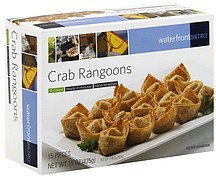
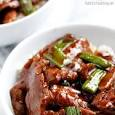
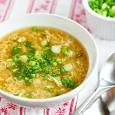
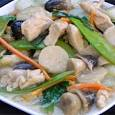

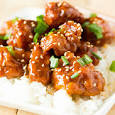
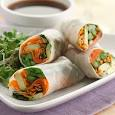

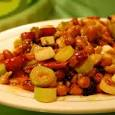
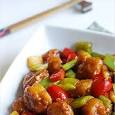
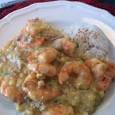
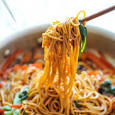
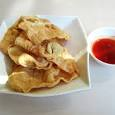
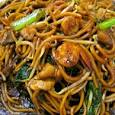
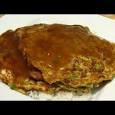
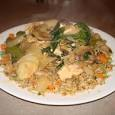
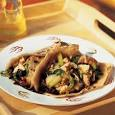
















Add your comment